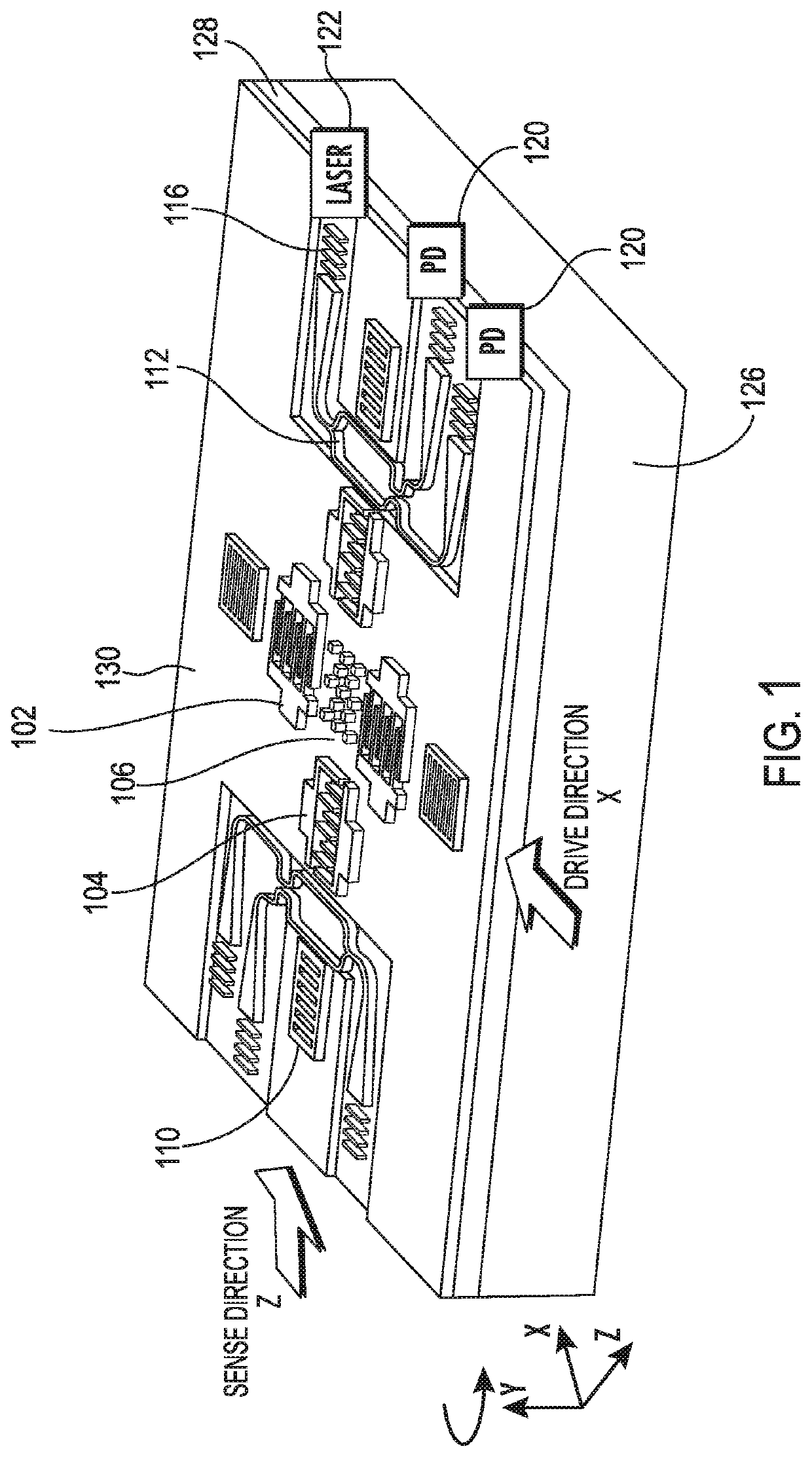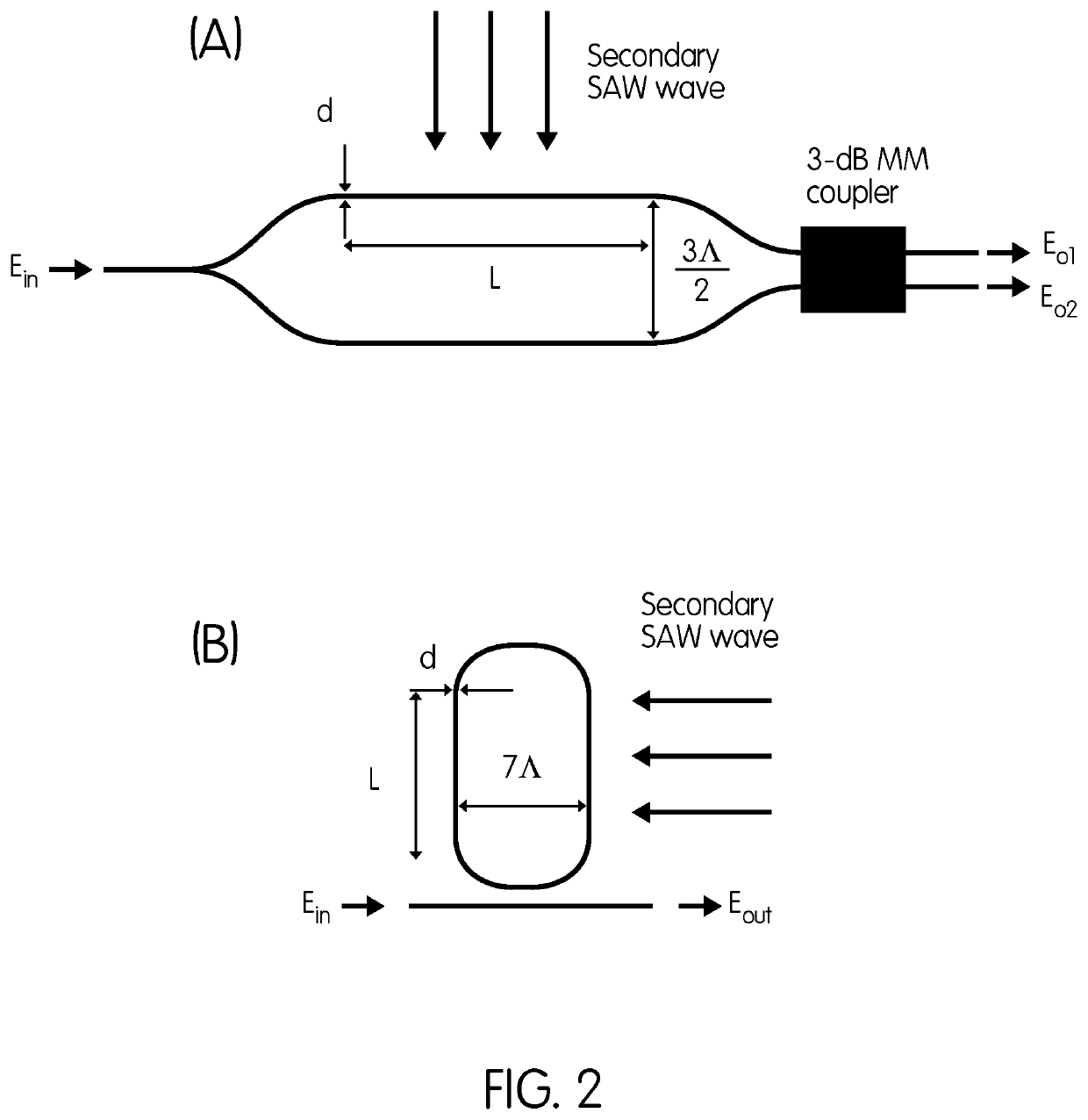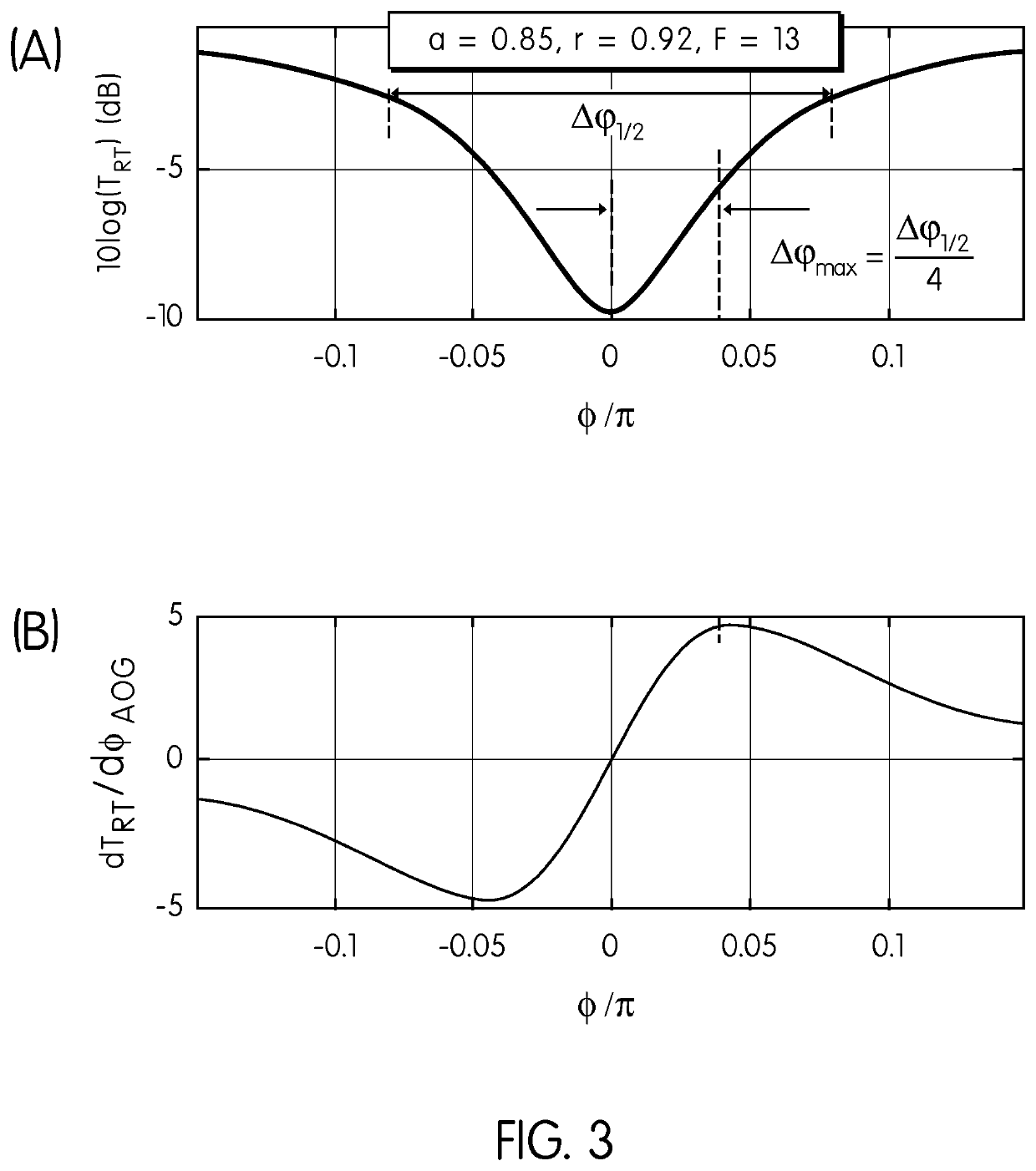Acousto-optic gyroscopes
a gyroscope and optical technology, applied in the field of acoustooptic gyroscopes, can solve the problems of large released mass, limited output bandwidth, and mvgs being vulnerable to shock, and achieves wide bandwidth operation, low noise level, and large unreleased mass
- Summary
- Abstract
- Description
- Claims
- Application Information
AI Technical Summary
Benefits of technology
Problems solved by technology
Method used
Image
Examples
Embodiment Construction
[0023]FIG. 1 depicts a schematic view of the AOG and offers an overview of its principle of operation. Two orthogonal SAW resonators 102, 104, are provided with metallic pillars 106 placed at the center acting as the moving mass, Mp, of the gyroscope. A SAW standing wave pattern is established along the drive (X) direction. The pillars 106 are placed inside the cavity at the anti-nodes of the SAW standing wave pattern, that is, at the location of the maximum x-directed velocity. The pillars 106 are driven longitudinally with vibration velocity, vp. When out-plane rotation, Ωz, is applied, Coriolis force, Fc, is induced on the vibrating pillars 106 in the direction orthogonal to both the input rotation direction and the drive vibration direction. The Coriolis force can be expressed as:
Fc=−2MpΩz×vp (1)
[0024]The pillars are arranged in a checkerboard configuration such that their constructive interference establishes a secondary SAW in the sense (Z) direction. For Rayleigh SAW mode, t...
PUM
 Login to View More
Login to View More Abstract
Description
Claims
Application Information
 Login to View More
Login to View More - R&D
- Intellectual Property
- Life Sciences
- Materials
- Tech Scout
- Unparalleled Data Quality
- Higher Quality Content
- 60% Fewer Hallucinations
Browse by: Latest US Patents, China's latest patents, Technical Efficacy Thesaurus, Application Domain, Technology Topic, Popular Technical Reports.
© 2025 PatSnap. All rights reserved.Legal|Privacy policy|Modern Slavery Act Transparency Statement|Sitemap|About US| Contact US: help@patsnap.com



